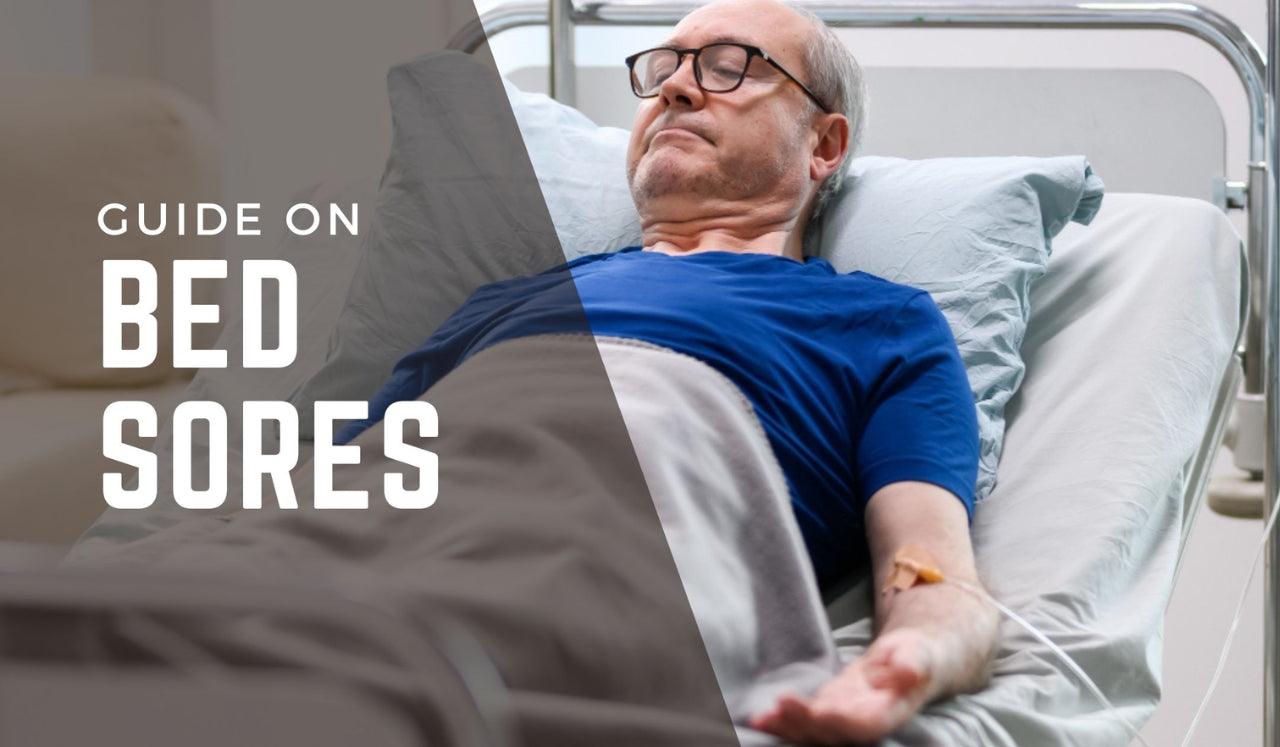UNDERSTANDING BEDSORES: CAUSES AND RISK FACTORS

Whats mean by pressure sore or bedsore or decubitus ulcer?
Bedsores, also known as pressure ulcers or decubitus ulcers, are injuries to the skin and underlying tissue resulting from prolonged pressure on the skin. They commonly develop on skin covering bony areas of the body, such as the heels, ankles, hips, and tailbone.
COMMON MYTHS AND MISCONCEPTION OF BED SORE:
Myth 1: Bedsores Are Inevitable in Immobile or Elderly Individuals
It's a common belief that bedsores are unavoidable among those who are bedridden or elderly. However, with proper care, including regular repositioning, skin inspections, and maintaining good nutrition, the development of pressure ulcers can often be prevented.
Myth 2: Pressure Sores Develop Only After Prolonged Periods
Many assume that pressure ulcers require extended periods to form. In reality, they can develop rapidly, sometimes within hours, if there's sustained pressure on vulnerable areas. Regular movement and repositioning are essential to prevent their onset.
Myth 3: Only the Elderly Are at Risk
While age is a risk factor, pressure ulcers can affect individuals of any age who experience limited mobility, poor nutrition, or certain medical conditions. It's essential to assess risk based on individual health status rather than age alone.
Myth 4: Keeping the Wound Dry Is Best for Healing
Contrary to the belief that wounds should be kept dry, maintaining a moist wound environment can promote better healing. Using appropriate dressings that keep the ulcer moist while protecting surrounding skin is often recommended.
Myth 5: Massaging Reddened Skin Prevents Bedsores
Massaging areas of reddened skin can actually cause more harm than good. It can damage underlying tissues, especially over bony prominences, potentially worsening the condition. Instead, focus on relieving pressure through repositioning and using supportive surfaces.
By dispelling these myths, caregivers and healthcare providers can implement more effective strategies for the prevention and management of pressure ulcers.
What are the Early Signs of Bedsores?
Identifying bedsores in their initial stages is crucial for effective treatment. Early indicators include:
- Discoloration: The skin may appear red in individuals with lighter skin tones and blue or purple in those with darker skin tone
- Temperature Changes: Affected areas might feel warmer or cooler than the surrounding skin
- Texture Variations: The skin could feel firmer or softer than adjacent areas.
- Pain or Itching: Discomfort in specific areas can signal the onset of a pressure ulcer.
How to Prevent Bedsores?
Preventative measures are essential to reduce the risk of developing bedsores:
- Regular Repositioning: Change positions frequently to alleviate pressure on vulnerable areas. For those confined to a bed, repositioning every two hours is advisable. Wheelchair users should aim to shift their weight every 15 minutes
- Daily Skin Inspections: Examine the skin daily for signs of pressure ulcers, especially in high-risk areas. Early detection can prevent progression.
- Maintain Skin Hygiene: Keep the skin clean and dry. After cleansing, ensure thorough drying and consider using moisturizers to maintain skin integrity
- Use Supportive Devices: Employ cushions, pads, and specialized mattresses to distribute pressure evenly and reduce the risk of skin breakdown.
- Optimize Nutrition: A balanced diet rich in essential nutrients supports skin health and aids in preventing tissue breakdown.
- Stay Active: Engage in mobility exercises, as permitted, to promote circulation and reduce prolonged pressure on any one area.
By implementing these strategies, individuals and caregivers can significantly reduce the risk of bedsores, ensuring better health outcomes and enhanced comfort.
To aid in the prevention and management of bedsores, the Anti Decubitus Bubble Air Mattress, this mattress is designed to provide alternating pressure, which helps in relieving pain from sore spots, pressure spots, and pressure ulcers. It features 130 individual air bubbles for even support and weight distribution, ensuring user comfort. The mattress is made from heavy-duty medical-grade PVC and can support up to 130 kg. An ultra-quiet pump with a variable pressure dial allows for precise airflow and a restful sleep experience. The product comes with a 12-month warranty from the date of invoice generation.
In addition to the air mattress, other products that can assist in bedsore prevention, such as Tubular Air Mattress , Underpads and Adjustable Beds. These products are designed to enhance patient comfort and support effective bedsore management.

